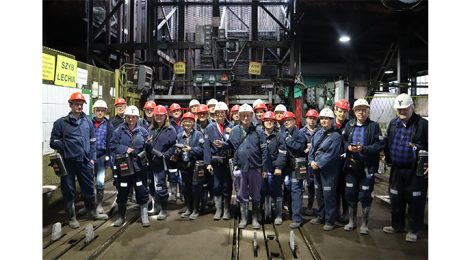
Raising Awareness of Industrial Heritage
Key Recommendations from the Conference “Industrial Heritage in the Green Heart of Europe”
Industrial heritage is a significant part of the heritage landscape both here in the UK and in most other European countries. A major international conference took place in November at Katowice in Poland hosted by the National Heritage Institute of Poland and other bodies. The event had 130 participants from 8 countries, including specialist researchers, scientists, officials from monument protection offices and individuals actively engaged in industrial heritage museums and projects.
Themes included ongoing efforts to safeguard and protect industrial heritage while also contributing to environmental protection by reducing CO2 emissions into the atmosphere. The presentations and discussions have been distilled into 7 key recommendations for the future which it is hoped will be taken forward by a wide range of organisations:
- Industrial heritage is part of the common identity of the people of Europe. It is a testimony to the dynamic development of European countries.
- Industrial heritage, as a collective term for immovable and movable heritage, is the basis for identifying the inhabitants of various industrial regions of Europe. It is a testament to meeting citizens’ desires for increasing mobility and the need for efficient manufacturing solutions.
- Information policy conducted by independent media plays a key role in raising awareness of the need to preserve industrial heritage in Europe.
- Preserving industrial heritage through its adaptation and reuse is environmentally friendly, saving huge amounts of energy already invested in buildings and structures. It generates significantly less CO2 than is used in the case of demolition and construction of new similar facilities.
- Coal should be treated as an essential component of Europe’s industrial heritage, driving its development during the industrial revolution. This has already been recognized by the UNESCO inclusion of several coal-related sites and landscapes in Europe.
- Maintaining our coal-dependent mobile heritage is essential if current and future inhabitants are to understand their history and learn from past patterns. For this reason, it is important to maintain and preserve coal mining capacity in Europe to ensure that the needs of technical museums presenting heritage in motion, such as locomotives, steam engines, steam-powered ships and other historic coal objects, are met.
- Taking into account the importance of coal in the economic history of Poland and the fact that several mines producing suitable coal are still operating, it is worth considering nominating one of the mines in Poland as a historic working mine, the aim of which is to secure future coal supplies for Europe’s industrial heritage.
On behalf of the conference participants, text of the recommendation was edited by: Prof Piotr Gerber (Lead Organiser) with assistance from speakers including:- Hildebrand de Boer (Europa Nostra), Tiddo Bresters. Jaap Nieweg, Miles Oglethorpe from various international industrial and mobile heritage organisations.

